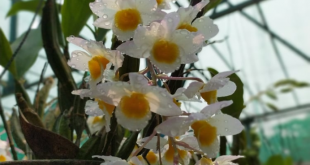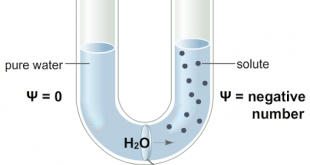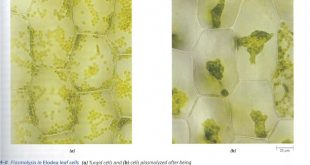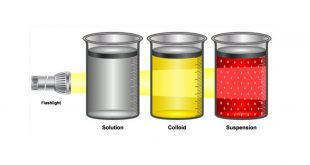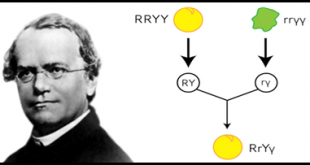Systematic position According to Bentham and Hooker it is placed under the series Coronaricae. Engler places it under the order Liliflorae. Hutchinson places it under the order Liliales of the division Corolliferae. Distribution The members of the family are cosmopolitan and specially abundant in the warmer parts of the tropical …
Read More »TimeLine Layout
April, 2020
-
18 April
Dicotyledonous Family: Lamiaceae
Systematic position Bentham and Hooker placed it in the sub-class Gamopetalae, the series Bicarpellate and Cohort Gentianales. According to Engler, it belongs to the sub-class Metachlamydeae, the sub-order Tubiflorae, the sub-order Verbenineae. Hutchinson places it under the order Lamiales belonging to the phylum Herbaceae. Distribution The family contains about 200 …
Read More » -
18 April
Dicotylidonous Family: Apocynaceae
Systematic position Bentham and Hooker placed it in the sub-class Gamopetalae,the series Bicarpellate and Cohort Gentianales . According to Engler it belongs to the sub-class Metachlymadeae, the sub-order Gentianineae under the order Controtae.Hutchinson places it under the order Apocynales of the Phylum Lignosae. Distribution The family contains about 300 genera …
Read More » -
18 April
Monocotylidonous Family: Orchidaceae
Systematic position According to Bentham and Hooker it belongs to the series Microspermae. Engler places it under the order Microspermae.Hutchinson considers it as belonging to the order Orchidales of the divison Corolliferae. Distribution The family is large and is consisting of over 400 genera and more than 10,ooo species distributed …
Read More » -
18 April
Monocotylidonous Family: Poaceae
Systematic position Bentham and Hooker places this family under the series Glumaceae of the Monocotyledons. According to the Engler it belongs to the order Glumiflorae. Hutchinson places it under the order Graminales belonging to the division Glumiflorae. Distribution The members of this family is cosmopolitan and grow on almost all …
Read More » -
17 April
Concept of Water Potential
Concept of water potential Free energy per mole is the chemical potential. The water potential is the chemical potential of a water solution in a system minus the chemical potential of pure water at atmospheric pressure and at the same temperature. A system’s water potential expresses its ability to do …
Read More » -
17 April
Solution Types, Plasmolysis and Imbibition
Isotonic, Hypotonic and Hypertonic solution Case A In the cell, Concentration = .1mMol L-1 Ψp is negligible or 0 In the solution of the container, Concentration = .1mMol L-1 Ψp = 0 In both cases, Ψw = Ψπ + Ψp = -CRT (Ψp is 0 or negligible) Comment: There will …
Read More » -
17 April
Mixture Types: Solution, Suspension, Colloids & Others
Chemistry is about combining different substances. Sometimes combining substances can cause a chemical reaction and bonding. This creates an entirely new substance called a compound. However, sometimes when there is no chemical reaction or bonding, it forms only a mixture. A mixture is made when two or more substances are …
Read More » -
17 April
Mendelian Inheritance: Part III
If you have read the first and second part you may have understood that this is our third and final part. In this part we are going to discuss Monohybrid, dihybrid and trihybrid inheritance, Back cross and test cross and Probability in Mendelian inheritance, Chi-square test. So let’s not waste …
Read More » -
17 April
Properties of Water & Its Movements inside Plants
Properties of water Most of the unique properties of water are ascribed to the H bond formed between polar water molecules. The two H atoms are angled at 105° in a water molecule (?). 1. Surface tension Surface tension results due to forces of attraction existing between the molecules …
Read More »
 Plantlet The Blogging Platform of Department of Botany, University of Dhaka
Plantlet The Blogging Platform of Department of Botany, University of Dhaka



